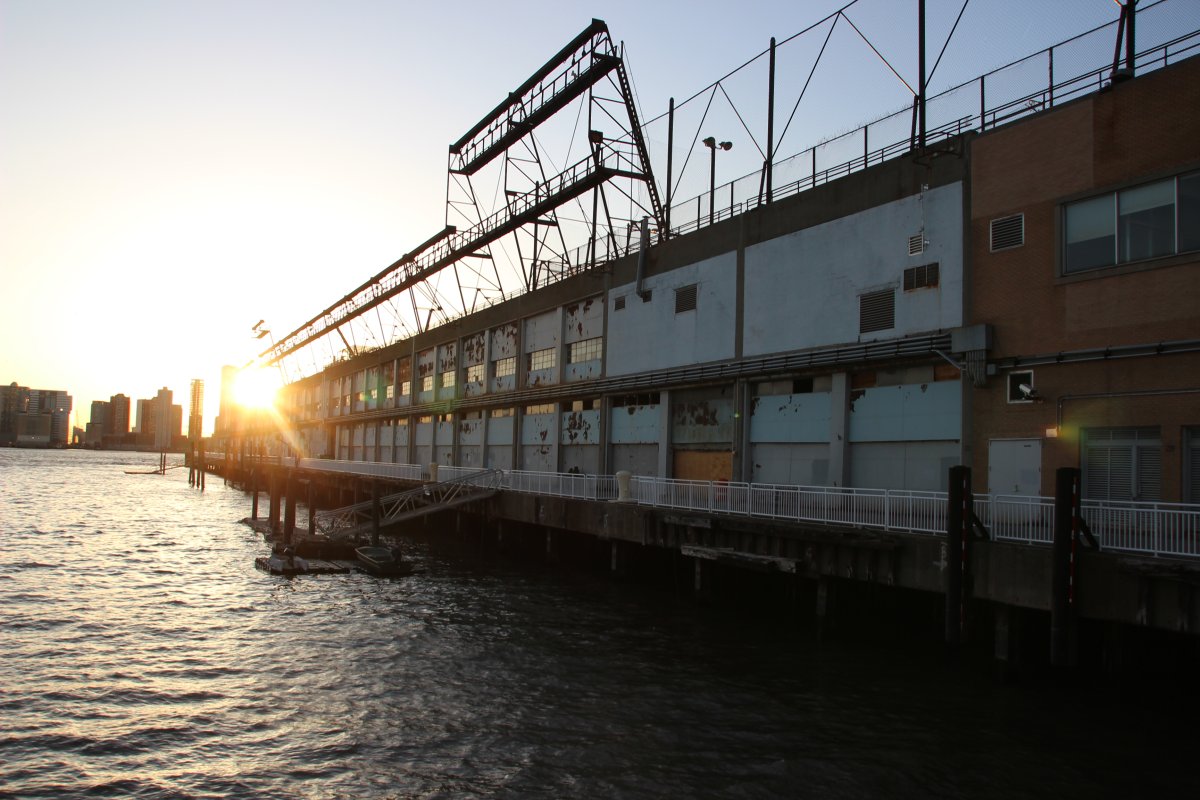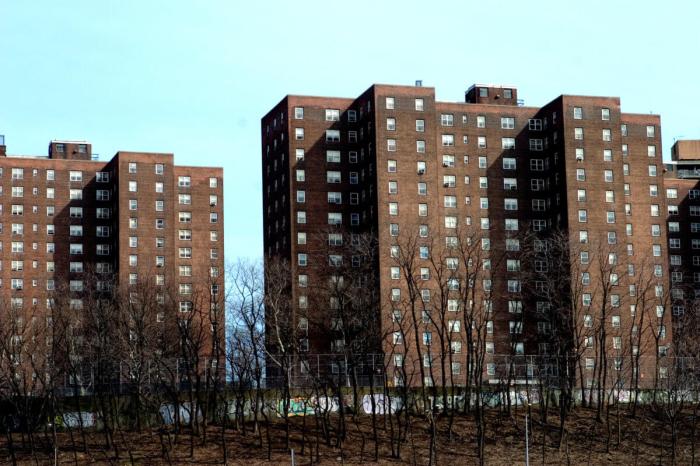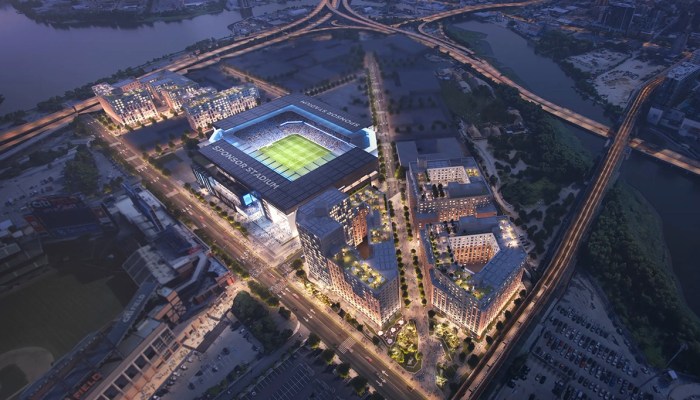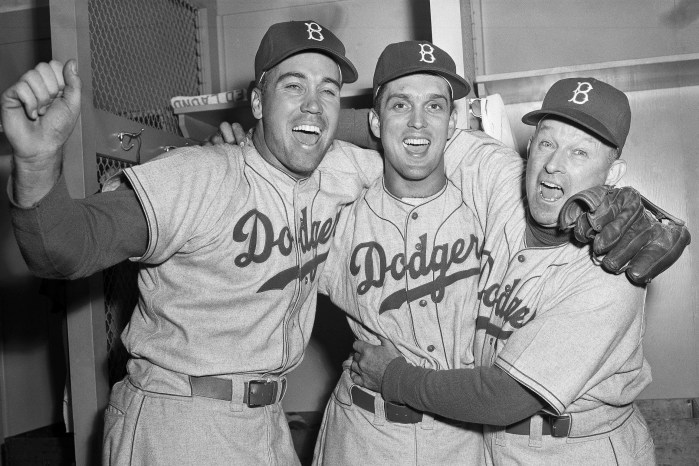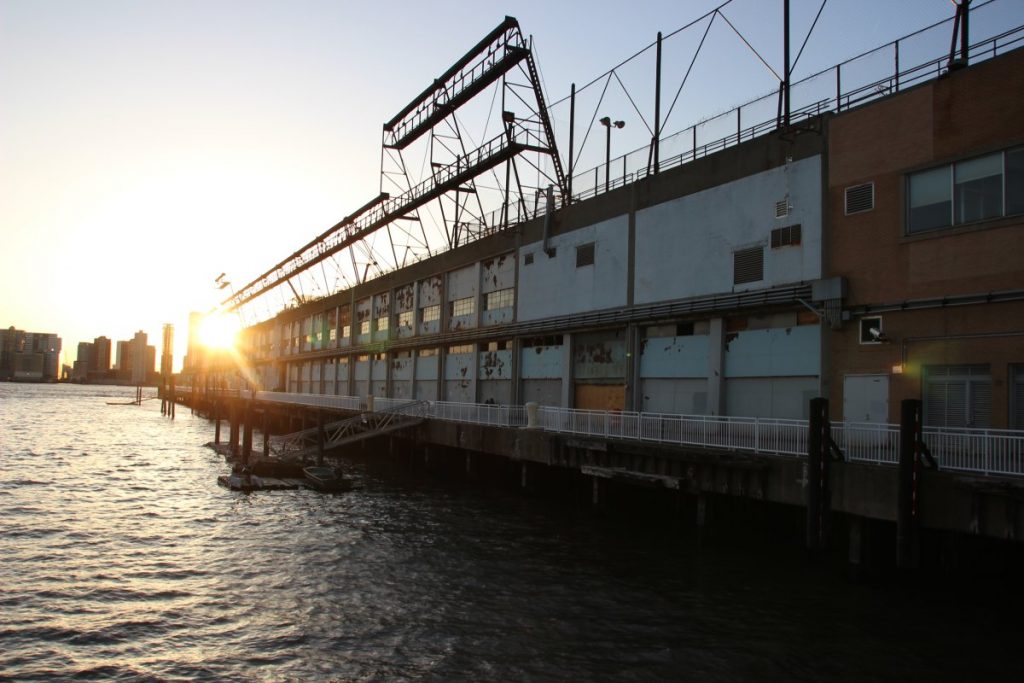
BY LINCOLN ANDERSON | Updated Thurs., Feb. 28, 2:30 p.m.: Local politicians are taking another swing at Pier 40, the Lower West Side’s youth baseball and soccer mecca. The effort’s clear goal is to change the park’s founding legislation — very possibly to allow commercial office use on the sprawling W. Houston St. pier.
What is being described as an “informal, staff-level working group” has been meeting since the start of this year. There have reportedly been about three meetings so far. These have involved staff members of local pols, including City Council Speaker Corey Johnson, Assemblymember Deborah Glick, Congressmember Jerry Nadler, state Senators Brad Hoylman and Brian Kavanagh and Manhattan Borough President Gale Brewer.
Pier 40, covering 14.5 acres, is currently one of two remaining so-called “commercial nodes” in Hudson River Park that can be used to generate additional revenue for the 4.5-mile-long park. However, the Hudson River Park Act of 1998 specifically does not allow commercial office use at Pier 40.
One staffer who has been involved in the meetings, and requested anonymity, said the hope is for the legislative changes to be made this session. The Assembly and state Senate reconvened in Albany last month and their current session extends through June.
Another objective, he said, is to “get an R.F.P. going,” meaning a request for proposals from interested private parties to redevelop the pier.
“It’s a renewed effort to find consensus on Pier 40,” the staffer said.

Previous efforts to redevelop the pier have all sunk, mainly due to a mix of economic factors and community opposition. Twelve years ago, for example, the Related Companies pitched an ambitious plan that would have included the Tribeca Film Festival and Cirque du Soleil. But locals derided it as “Vegas on the Hudson,” and warned its impact on the pier, the park and the community would have been too great.
The local legislators also recently sent a letter to the Hudson River Park Trust requesting “updated financials” for Pier 40. The pier’s main revenue-generating component right now is long-term car parking, which, in fact, provides a significant portion of the whole park’s operating budget.
The pier’s other key aspect is its playing fields, which are heavily used by local youth leagues and are a sacred cow for Downtown families.
The Trust’s leadership has indicated commercial office use is now something they think would work well, relatively speaking, on the pier, in terms of financial viability.
In 2017, Community Board 2 created a Future of Pier 40 Working Group, which, through a public process, allowed West Siders and park users to weigh in the future of the pier, and of the park over all. The source said the current effort will be using that previous task force’s findings “as a guide.”
Topics up for discussion include the lease length for the pier, as well as “programming scenarios,” plus whether Pier 40 should be redeveloped with “part office space or all office space,” in terms of its commercial component, the staffer added.
“We’ll see what we have in a couple of months,” he said.
Asked if there would be opportunity for public input into this process, the staff member assured there would be, and that the working group’s ideas will be presented to C.B. 2, which the working group has already met with once. The working group will continue to be in close contact with the community board about its thinking on Pier 40, the source said.
Another question is whether the proposed legislative changes would be left until the very end of the Albany session to be voted on. Six years ago, the Trust worked to stealthily slip in an amendment to the Park Act on the very last day of the Legislature’s session, authorizing air-rights transfers from the park to development sites on the other side of the West Side Highway.
In her monthly newsletter to Community Board 2 last Thursday, Assemblymember Glick said, “It is imperative that, if any changes are made to the Hudson River Park Act that will allow for future development at Pier 40, they must evoke the desires of the greater community of residents and park users while also contributing to the financial stability of the park and its future.”
Glick added, “Because Pier 40 is the largest open space in Hudson River Park and the location of recreational ball fields that are essential to the many youth and adult sports leagues in Manhattan, and Downtown families in particular — a solution for all stakeholders must be found.”
The assemblymember said the local legislators whose districts include Pier 40 “have committed to meeting regularly throughout the 2019 legislative session, and participating in a transparent, community-driven public process, in order to discuss a common-sense approach for the redevelopment of Pier 40 and any potential changes to the Hudson River Park Act.”
Asked about the working group last week, state Senator Hoylman said, “We want to take a hard look at the Act and see if we have to make any changes.” The goal, he said, is “to keep the ball fields and create a revenue stream that’s not entirely based on parking.”
While his state Senate colleague Kavanagh’s district actually includes Pier 40, Hoylman’s district covers the area surrounding the pier.
The Hudson River Park Trust is the state-city authority that is building and operates the whole park, which last year celebrated its 20th anniversary.
Madelyn Wils, the Trust’s president and C.E.O., said the local elected officials are working to come up with a plan for Pier 40 that also meets the Trust’s goals for the key pier, and that indeed the aim is to amend the Park Act this session.
She said the Trust still thinks office use is the way to go for redeveloping the pier’s commercial component, and that a longer lease is needed. The Trust has long said that a longer lease would make the pier more attractive to potential developers.
“We’re going to work with the elected officials,” Wils assured.
Asked about an R.F.P. being released for Pier 40, she indicated that there’s a process, and that step could come in due time, but only if the legislation is modified to allow commercial office use at the pier.
“We’re not putting out any R.F.P.,” she stated. “We can’t put out an R.F.P. for something that is not legal. We want to see where we are in June.”
On Tues., Feb. 26, the newly resuscitated C.B. 2 Pier 40 Working Group held its first meeting. Noreen Doyle, a Trust senior V.P., reported the Trust favors a full tear-down of Pier 40’s pier shed for the pier’s redevelopment rather than “band-aid” fixes as part of a so-called adaptive reuse of the existing structure.
In addition, the Hudson River Park Trust Advisory Council meets Mon., March 11, at Village Community School, 272 W. 10th St., at 6:30 p.m., and Pier 40 will be firmly on the agenda. C.B. 2 reportedly hopes to have a new resolution stating its opinion on the future of Pier 40 done by April.



